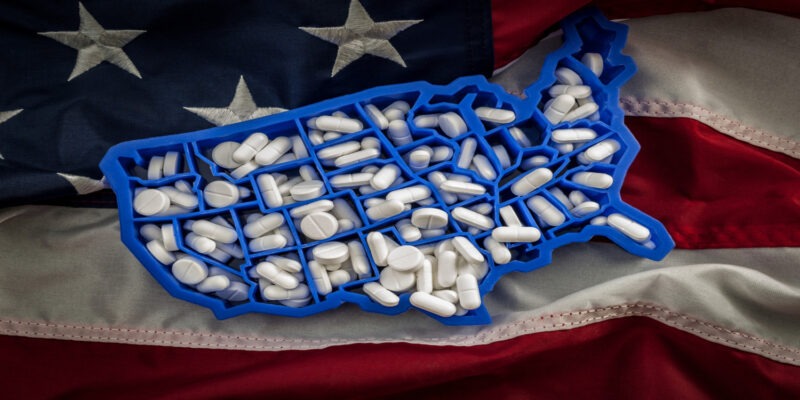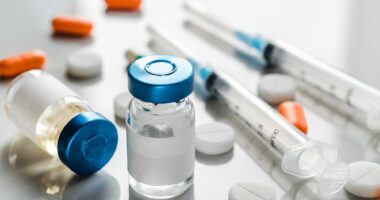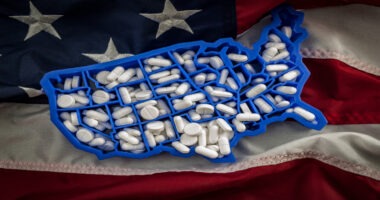President Trump Signs Executive Order To Increase US-Based Pharma Manufacturing
President Donald Trump signed an Executive Order this week to facilitate drug manufacturing in the US, including calling for measures to streamline FDA and EPA review of domestic pharma manufacturing facilities and enhance review of foreign drug-manufacturing facilities. What’s next?
By Patricia Van Arnum, Editorial Director, DCAT, pvanarnum@dcat.org
Seeking to streamline regulatory processes
President Trump issued this week (May 5, 2025) an Executive Order to streamline the regulatory review by the US Food and Administration of pharmaceutical manufacturing facilities in the US, enhance the inspection process of foreign drug-manufacturing facilities, and streamline permitting of manufacturing facilities by the Environmental Protection Agency (EPA).
“One key area of concern is the length of time it takes to build pharmaceutical manufacturing facilities in the United States today,” said the Executive Order issued on May 5, 2025, which cited estimates of 5 to 10 years to build new manufacturing capacity in the US for pharmaceuticals and critical inputs. “New construction must navigate myriad Federal, State, and local requirements ranging from building standards and zoning restrictions to environmental protocols that together diminish the certainty needed to generate investment for large manufacturing projects…Even expanding existing capacity or modifying existing production lines to produce new or different products requires extensive permitting and regulatory approval, making it more difficult to repurpose existing underutilized pharmaceutical manufacturing capacity available domestically.” The Executive Order also pointed to a differential in the inspection process of domestic pharmaceutical manufacturing facilities and foreign drug-manufacturing that creates barriers for domestic pharmaceutical manufacturing.
To address those issues, the Executive Order outlined several measures to be taken by the US federal government to facilitate domestic pharmaceutical manufacturing in the US as outlined below.
Streamlining FDA review of domestic manufacturing. By November 1, 2025, the Executive Order directs the US Secretary of Health and Human Services, through the FDA Commissioner, to review existing regulations and guidance that pertain to the development of domestic pharmaceutical manufacturing and to take steps to eliminate any duplicative or unnecessary requirements, maximize the timeliness and predictability of agency review, and streamline and accelerate the development of domestic pharmaceutical manufacturing. This includes reviewing regulations and guidance that apply to the inspection and approval of new and expanded manufacturing capacity and emerging technologies that enable the manufacturing of pharmaceutical products, active pharmaceutical ingredients (APIs), key starting materials, and associated raw materials in the US.
To achieve those goals, the Executive Order directs the FDA Commissioner to evaluate the current risk-based approach to prior approval of licensure inspections, including when such inspections are necessary, and improve the inspection process to ensure that inspections are prompt and efficient.
In addition, the FDA Commissioners is directed to take action on other measures relating to the inspection process and data reporting. These include: (1) expanding existing programs that provide early technical advice before a facility is operational; (2) improving enforcement of data reporting, including publicly displaying the list of facilities, including foreign facilities, that are not in regulatory compliance; (3) providing clearer guidance regarding the requirements or recommendations for site changes, including moving production from a foreign to domestic facility, and validation of new or updated components necessary in manufacturing; and (4) updating any other relevant compliance policies, guidance documents, and regulations.
Enhancing inspection of foreign manufacturing facilities. By August 3, 2025, the Executive Order directs the FDA Commissioner to develop and advance improvements to the risk-based inspection regime that ensures routine reviews of overseas manufacturing facilities involved in the supply of medicines to the US. This will be funded by increased fees on foreign manufacturing facilities and would require the FDA Commissioner to publicly disclose the annual number of inspections that FDA conducts on foreign facilities, with specific detail by country and by manufacturer.
In a separate action announced by FDA on May 5, 2025, the agency announced its intent to expand the use of unannounced inspections at foreign manufacturing facilities that produce foods, essential medicines, and other medical products for the US market. This change builds upon the agency’s Office of Inspection and Investigations Foreign Unannounced Inspection Pilot program in India and China. While FDA inspections of domestic manufacturing facilities are not announced, inspection of foreign drug manufacturing facilities are unannounced, a differential in inspection practices that FDA is seeking to change. FDA conducts approximately 12,000 domestic inspections and 3,000 foreign inspections each year in more than 90 countries, according to the agency.
Streamlining review of domestic pharmaceutical manufacturing by the Environmental Protection Agency (EPA). By November 5, 2025, the Executive Order directs the EPA Administrator to update regulations and guidance that apply to the inspection and approval of new and expanded manufacturing capacity of pharmaceutical products, APIs, key starting materials, and associated raw materials in the US to eliminate any duplicative or unnecessary requirements and maximize the timeliness and predictability of agency review.
Centralized coordination of environmental permits. The Executive Order identifies EPA as the lead agency for the permitting of pharmaceutical manufacturing facilities that require environmental impact assessments unless that role is assumed by another agency. The lead agency is directed to designate a single point of contact within the agency to coordinate with permit applicants. Additionally, the Office of Management and Budget is directed to coordinate with the lead agency and with other relevant agencies to expedite the review and approval of relevant permits.
Streamlining review of domestic pharmaceutical manufacturing by Army Corps of Engineers. By November 5, 2025, the Executive Order directs the Secretary of the Army, acting through the Assistant Secretary of the Army for Civil Works, to review the nationwide permits issued under the Clean Water Act and the Rivers and Harbors Appropriation Act to determine whether an activity-specific nationwide permit is needed to facilitate the efficient permitting of pharmaceutical manufacturing facilities.
What’s next
The Executive Order lacks details on specific measures that would be taken to realize the goal of streamlining the regulatory review process to facilitate new and expanded pharmaceutical manufacturing capacity in the US. Key items to watch for in the coming months are further executive or Congressional action to realize the goals to facilitate domestic manufacturing in the US.
One issue not yet specifically addressed is the cost of increasing or relocating pharmaceutical manufacturing to the US and financial incentives to do so. While proposed tariffs under consideration by the Administration create additional costs for importing products into the US with a policy goal of increasing domestic manufacturing, they do not address the practical issues of the cost of relocating or building pharmaceutical manufacturing capacity in the US.
Dating back to 2020 and since then, policy makers and industry stakeholders have sought to address vulnerabilities in the supply of critical medicines to the US that surfaced during the COVID-19 pandemic. In 2020, the Association for Accessible Medicines (AAM), which represents US-based generic drug companies and manufacturers, issued a Blueprint for Enhancing the Security of the US Pharmaceutical Supply Chain, a six-element policy framework for the federal government that would support the financial feasibility of increasing US domestic manufacturing of generic drugs. The blueprint laid out actions that the federal government could take to ensure a consistent supply of critical pharmaceuticals, which built upon the existing generics pharmaceutical supply chain in the US, which included among other measures, financial incentives to increase domestic manufacturing capacity as well as product volume guarantees. In addition, in 2023, AAM released a white paper to outline policy recommendations to mitigate generic drug shortages in the US, which included policy proposals to increase generic-drug manufacturing capacity in the US, including providing targeted federal grants or contracts, or other direct assistance, to generic manufacturers with excess manufacturing capacity to upgrade and update existing manufacturing lines, build new lines in existing facilities, or build new facilities to provide additional capacity.







